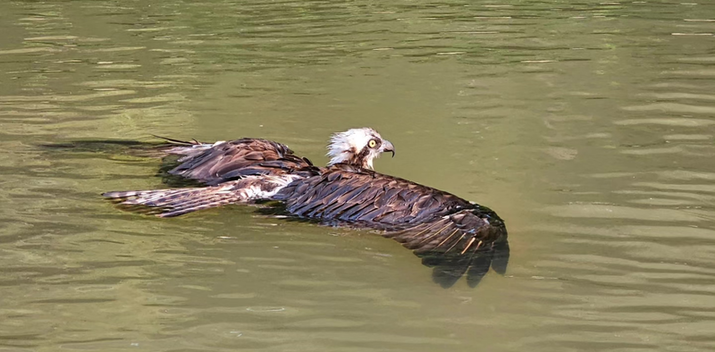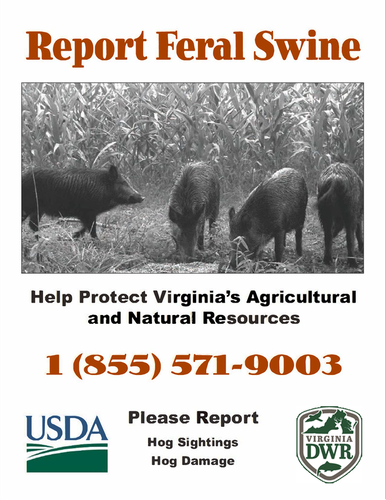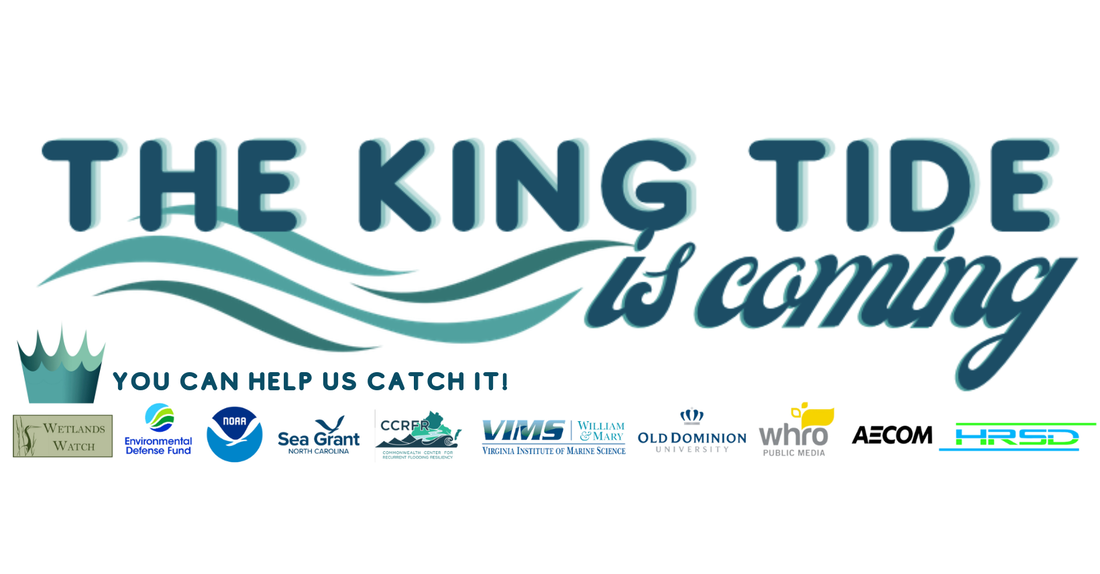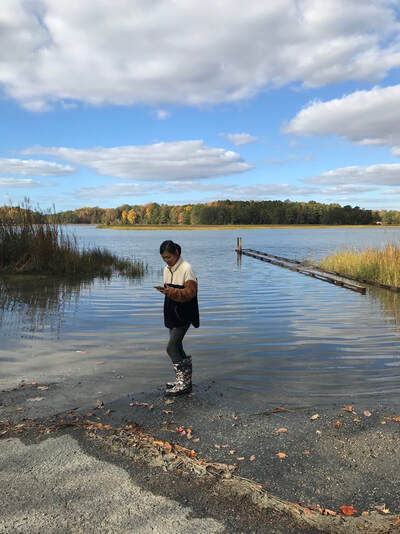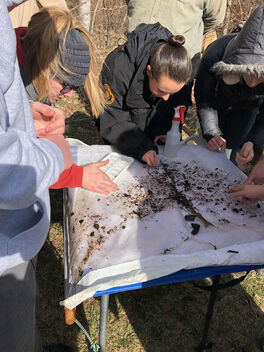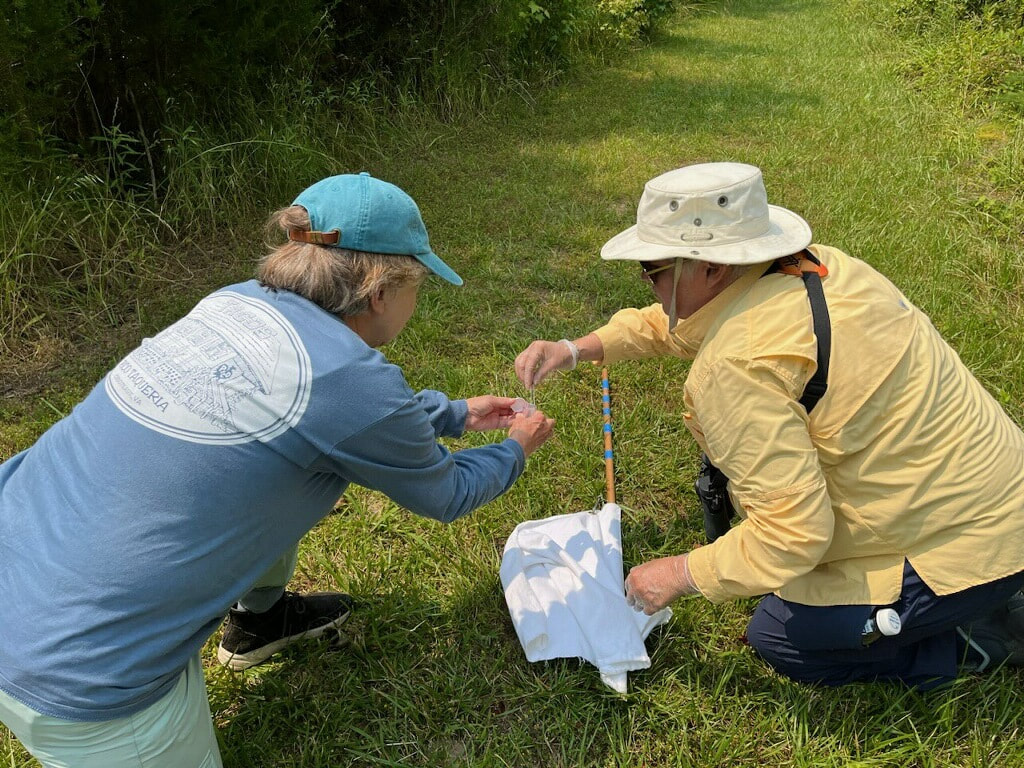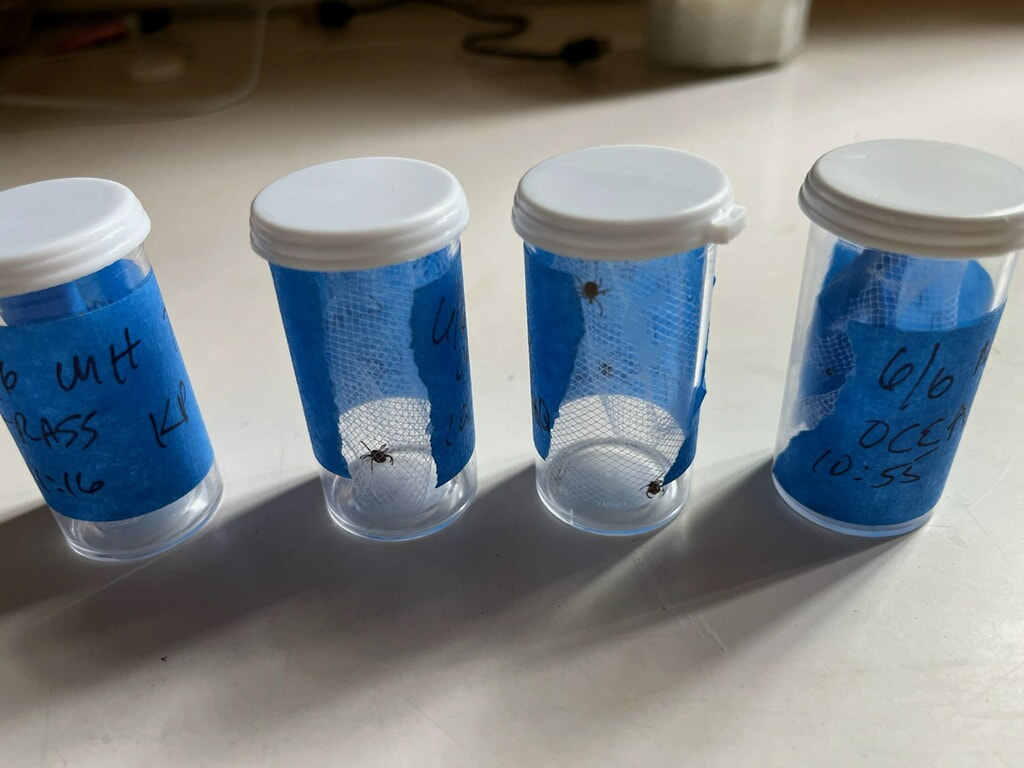Each quarter, we invite VMN chapters to share stories of volunteers’ awards and accomplishments. Our Laurels posts are not only a way to provide recognition to those volunteers, but also an opportunity to inspire other volunteers. If you are inspired by one of the projects or accomplishments mentioned here and want more information, please contact the VMN state office and we’ll put you in touch!
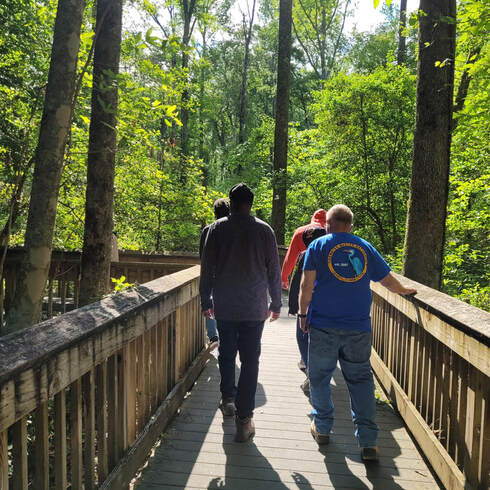 VMN volunteer Allen Carter leads group from the United Full Gospel Revival Center into the Great Dismal Swamp National Wildlife Refuge. Photo by Mickie Nance.
VMN volunteer Allen Carter leads group from the United Full Gospel Revival Center into the Great Dismal Swamp National Wildlife Refuge. Photo by Mickie Nance.
Tidewater Chapter Connects with African-American Communities
–Contributed by Beth Deir, VMN volunteer, Tidewater Chapter
The Diversity & Inclusion Committee of the Tidewater Chapter has been busy planning events that make meaningful connections with underrepresented communities. Our motivation is reflected in the phrase, “Nature is for everyone.”
Committee member Mickie Nance coordinated with Deacon Jerome Childs of The United Full Gospel Revival Center, Suffolk, to lead a hike for the congregation’s young members into the Great Dismal Swamp National Wildlife Refuge (GDSNWR). Although the Center is less than 2 miles from GDSNWR, none of the congregation’s members had ever visited the refuge. Early on May 6, Mickie, accompanied by volunteers Allen Carter and Mary Jane Hall, met the youth group and its leader and embarked on an amazing journey! The hike not only allowed the group to explore the unique ecosystem and its natural beauty, but the volunteer leaders were also able to share a bit about the historical significance the swamp had to both African American and indigenous communities. Although the group was small, they are excited to continue their exploration of the GDSNWR and its rich history with the help of the Tidewater Chapter.
Committee member Polly Street took the lead in planning our first ever Bird Walk to coincide with Black Birders Week. Polly was able to connect with Cape Henry Audubon Society member Saundra Winstead, who led the walk. The event was a true collaboration between three local organizations. On May 27, members of the Tidewater Chapter, Cape Henry Audubon Society, and the Norfolk Branch NAACP met at Stumpy Lake Natural Area, Virginia Beach, for a glorious morning of birding! The bird walk was well-attended by first-timers, novice, and experienced birders. Even though the weather was less than ideal, we spotted a plethora of birds. Pairs of Scarlet Tanagers and Prothonotary Warblers were lifers for many in attendance!
Both events were firsts of what will be recurring series for our chapter.
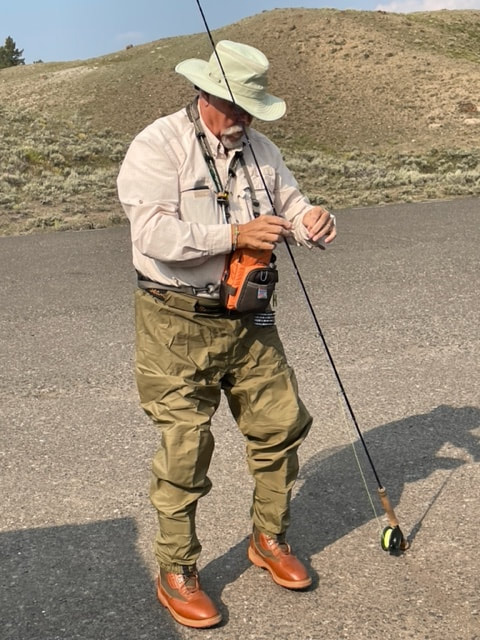 Bob Bessette on a fly fishing trip in Yellowstone National Park. Photo by G. Bessette.
Bob Bessette on a fly fishing trip in Yellowstone National Park. Photo by G. Bessette.
Old Rag Chapter – The Naturalist Is In
–By Emily Byers, VMN volunteer, Old Rag Chapter
American author, Sidney Sheldon said that “libraries store the energy that fuels the imagination. They open windows to the world and inspire us to explore, achieve, and contribute to improving our quality of life.” The Fauquier County Library intends to emulate this ideal through the offering of engaging community programs at its three branches (Marshall, Bealeton, and Warrenton) that will offer patrons a one-on-one interaction with a Master Naturalist. This new program is called “The Naturalist Is In”.
The “Naturalist Is In” is the “brainchild” of library patron and Old Rag Master Naturalist, Robert Bessette. Robert uses his library card and love of nature to help educate others. A favorite activity is showing others how and where to find the information about nature. Robert said that “it is an amazing experience to share information about the natural world and even more exciting when you see people become excited about nature.” His passion for helping others was the conduit for the creation of the “The Naturalist Is In” library program. While exploring the library’s resources, Robert realized that some important nature books and resources that the Virginia Master Naturalists use in their study course and fieldwork were missing from the collection. The realization led to the creation of a “wish list” of nature books. Robert knew that to make the program effective, the three local library branches at Warrenton, Fauquier, and Marshall, would all need to receive copies of the books and that funding would be needed to purchase them. Finally, each library would be assigned a dedicated Old Rag Master Naturalist volunteer to man an information table once per month. The Master Naturalist would be available at the library for 3 hours, giving library visitors time to ask questions about nature and the available resources that the library had in its collection. Patrons of the library would then have the unique opportunity to ask questions about nature and get help to find and use the newly acquired environmental books and resources.
“The Naturalist Is In” program came to fruition because many individuals worked to make the program a reality. Robert said that “the volunteer Friends of Library group was great to work with. The staff is knowledgeable, helpful, and excited about the project.” The Friends of the Library wrote the application for the Make it Happen Grant through the PATH Foundation to obtain funds for the purchase of the program materials. Once approved, the materials were purchased and the program start date was set.
Robert said that he felt “that one-on-one human interaction can be important in the research process. It is a great feeling when you can help someone find the answer to a question and ignite the passion for learning about the natural world.” And that anticipation has been achieved from the very first session. Library patrons have expressed appreciation for the opportunity to talk with a trained Master Naturalist, get their questions answered, and have access to new and interesting books on nature. ORMN intends to explore the possibility of replicating this program in some or possibly all
of the other five counties in its catchment area.
Maria Del Rosso, Director, of the Fauquier Public Library, said that she “appreciated that Robert enthusiastically took the time to put together and pitch the program to the library.” She also stated that “I am excited that the Old Rag Master Naturalists wanted to donate their time and talents to help educate patrons of library” and that “she felt that the program is a real service to the community”. The staffing for the program with just one volunteer would add at least one hundred and forty-four volunteer hours at the libraries.
Libraries play a vital role in the community because they serve as community hubs that connect people to information and to individuals that can help answer questions, and also house materials that can be used by all. The addition of these resources is important because many rely on the library for research and to complete homework. A central goal of the program is to help library patrons and community members who seek information and answers about the natural world. The hope is that the program will work to ignite imaginations and promote a love of nature.
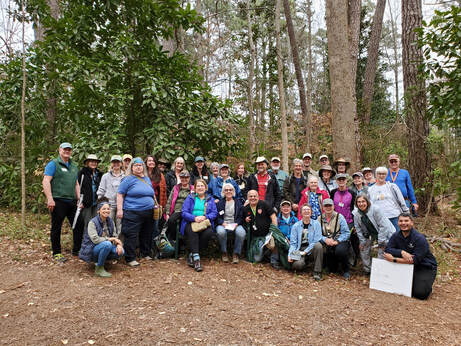 A group of VMN volunteers from both the Peninsula and Historic Rivers Chapters completed Tree Stewards training. Photo contributed by Daina Henry.
A group of VMN volunteers from both the Peninsula and Historic Rivers Chapters completed Tree Stewards training. Photo contributed by Daina Henry.
Peninsula and Historic Rivers Chapters Collaborate on Tree Stewards Training
–By Daina Paupe Henry, VMN volunteer, Peninsula Chapter
Laurels to Historic Rivers and Peninsula Chapter for their work in creating the first class of Master Naturalist Tree Stewards. A small group of 8 volunteers created a 10 week course on trees that used resources from Trees of Virginia and the Master Gardener Tree Steward program along with many other resources. The classes included talks on benefits and disadvantages of trees and forests, botany, taxonomy, soil, tree id, common tree problems, ecology, among others. It also offered two field experiences. Over 40 members from the two chapters completed the series successfully and received badges on Better Impact. Many thanks to the coordinators Ricklin Brown (Historic Rivers) and Jim Francis (Peninsula) for their leadership. Attached is a photo of the graduating class.
Shenandoah Chapter – Museum of the Shenandoah Valley Tree Survey–By Susan Galbraith, VMN volunteer, Shenandoah Chapter
Within Winchester City boundaries are 214 acres of land owned by the Museum of the Shenandoah Valley (MSV) The MSV recently opened trails for public use on this property. The trails run through old cow pastures, wetlands, and forests. The Shenandoah Chapter of VMN has adopted the trail system as a project. Part of the project, along with invasive species removal, was to identify all the trees within the trail system and to write up the results as an educational product.
The survey is extraordinary and singlehandedly was created by Paul Guay, even though he gives some of us credit. Paul’s tree survey is beyond the ordinary; within this comprehensive survey he has melded humanity with nature. Not only are detailed descriptions including photos of each tree and its parts provided, but Paul included art, literature, poetry, history, wildlife, and medicinal connections in his survey. Paul took most of the photographs or searched for just the right photo and yes, gave credit to the photographer. In the on-line version of the survey, Paul has provided numerous internet links for the curious to find further information. Paul estimates that he spent over 8,000 hours or one full year’s worth of time on this project, and it is obvious.
The Chapter was fortunate to have Paul show a brief overview of his recently completed survey at the June Chapter meeting, and anyone can download it from the chapter’s website.
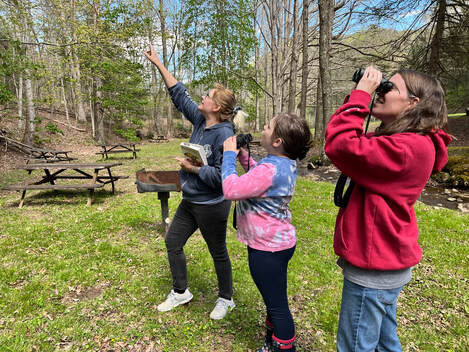 Participants in the class at Hungry Mother State Park spent time observing nature and then painted what they observed. Photo by VMN Holston Rivers Chapter.
Participants in the class at Hungry Mother State Park spent time observing nature and then painted what they observed. Photo by VMN Holston Rivers Chapter.
Holston Rivers Chapter – Brush Up on Nature at Hungry Mother
–Contributed by Monica Hoel, VMN volunteer, Holston Rivers Chapter
This summer you can find one HRVMN volunteer leading a painting class that begins with binoculars.
As part of her service hour commitment to VMN, Renee Wienecke is offering free painting classes at Hungry Mother State Park, but you can expect something a little special about these classes. In addition to learning about color-mixing and brush work, students also learn about nature.
Some classes offer participants a chance to paint a bird, others allow an opportunity to paint a salamander. But in either case, they look at the natural world before they stare at a canvas.
For instance, a recent class focused on a red-bellied woodpecker. But before anyone ever dipped a brush into that bright red paint, Renee and one of the Hungry Mother State Park rangers handed out binoculars and Peterson’s bird books and led folks off into the trees.
They listened and stared and hoped for a chance to see the woodpecker they were about to paint. As it often goes with birding, and Rolling Stones songs, they didn’t get what they wanted, but they absolutely got some great moments with wild birds, including a Baltimore oriole, a northern parula, and some bouncy little chipping sparrows who seemed very pleased to have an audience.
They made their way back to the picnic t
ables and began to paint while enjoying the fresh air of early spring, good conversation, and eventually they even heard that chirpy chur of a red-bellied woodpecker.
This is Renee’s summer service project, and she is not only accumulating great service hours, but she is also creating a great group of new nature enthusiasts.
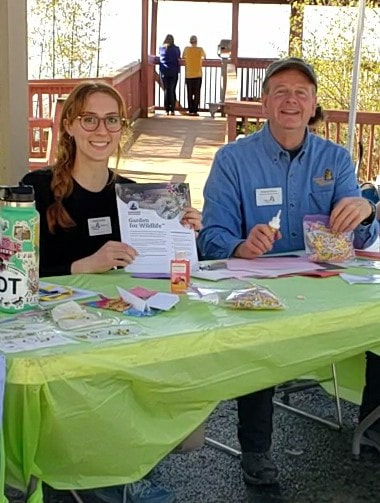 Emma Land (left) and other volunteers shared information on National Wildlife Federation habitat certification at the Mill Mountain Zoo Spring Fling. Photo by Sandy Lane.
Emma Land (left) and other volunteers shared information on National Wildlife Federation habitat certification at the Mill Mountain Zoo Spring Fling. Photo by Sandy Lane.
Roanoke Valley Chapter Volunteer Wins a Scholarship
Emma S. Land, a VMN volunteer in the Roanoke Valley Chapter and a recent graduate from Roanoke College, is the recipient of the inaugural Environment Scholarship from the Kiwanis Club of Roanoke. Emma plans to use the scholarship to help with her pursuit of a Master’s degree in forestry and natural resources at the University of Georgia. As a Virginia Master Naturalist volunteer, Emma has helped with trail maintenance on the Appalachian Trail and connected with the public at outreach events, where she shared information on topics such as black bears and pollinators. Congratulations, Emma!
Peninsula Chapter Offers a 5th Summer Continuing Education Series
–By Daina Paupe Henry, VMN volunteer, Peninsula Chapter
Laurels to the Peninsula Master Naturalist Chapter for offering for the 5th year in a row a summer continuing education series highlighting different topics. It is a series of 5 evenings with lectures every other week. Speakers were professionals and experts in their respective fields. The first year class was offered live (pre-pandemic) was on Trees and Forests. With the start of the pandemic, the series was offered over zoom. The following years provided series of talks on Moths and Butterflies; Mushrooms and Fungi; Climate Change, Soil Subsidence and Se Level Rise. This years topic is on Species and Habitat Conservation in Virginia. For the past two years, the series has been open to all chapters in Virginia and numerous members from other chapters have participated in the series. Links to the older series are available – most sessions were recorded (contact Daina Henry, CE chair for the chapter, for information.) Thanks to Melody Avery, Shirley Chirch, Daina Henry, and the many presenters over the past 5 years for their work on creating this offering.
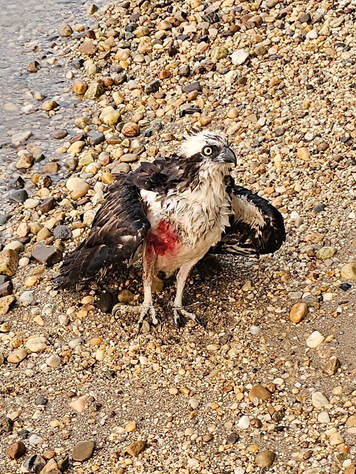 The osprey was clearly injured. Photo by Jenna Villforth Veazey.
The osprey was clearly injured. Photo by Jenna Villforth Veazey. 
